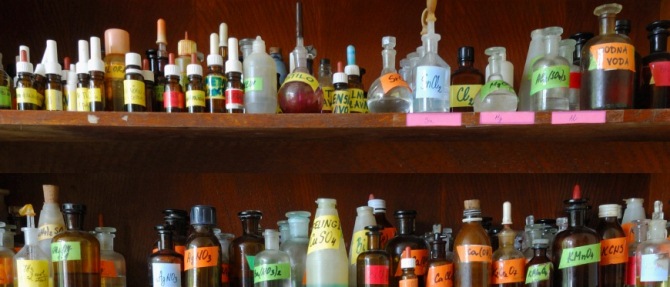How to Avoid the Solvent Buying Money Pit by Starting a Chemical Recycling Program
 Recycling and saving money are often two of the highest priorities for EH&S departments at any institution. When it seems like every option for cutting costs has been exhausted, it can be tough to find additional places to stop the monetary bleeding. Solvent recycling provides an innovative and simple way to reduce overhead and decrease the environmental impact of any lab, academic or professional. Acetone and acetonitrile in particular are two popular organic solvents that lend themselves very well to recycling, making them perfect starting points for a chemical recycling program that can save money on solvent purchasing and disposal, as well as help you work towards a level of self-sufficiency in your lab that can protect your research from the unpredictable.
Recycling and saving money are often two of the highest priorities for EH&S departments at any institution. When it seems like every option for cutting costs has been exhausted, it can be tough to find additional places to stop the monetary bleeding. Solvent recycling provides an innovative and simple way to reduce overhead and decrease the environmental impact of any lab, academic or professional. Acetone and acetonitrile in particular are two popular organic solvents that lend themselves very well to recycling, making them perfect starting points for a chemical recycling program that can save money on solvent purchasing and disposal, as well as help you work towards a level of self-sufficiency in your lab that can protect your research from the unpredictable.
Acetone
Purchasing new acetone regularly is one of the biggest and most overlooked money pits observed by chemistry and biology labs. What is ironic about this expensive cycle is that most labs use acetone primarily to clean and dry glassware. Because quality and potential impurities are not quite as vital during these chores as when studying reactions, there is some added wiggle room when recycling or otherwise reusing these chemicals that simply isn't there with other reagents. This presents an excellent opportunity for saving money.
As opposed to purchasing acetone by the bottle every week or so, acetone recycling is quite easy, virtually automatic, and extremely cost effective. Acetone recovery rates in commercially available machines are usually close to 100%, and the purity of the recovered acetone is typically greater than 99.9 %. Non-volatile contaminants are reduced exponentially through these processes, as well.
The same machine that is used to recycle acetone can also be used for a number of organic solvents with similar success. Acetonitrile provides an excellent example of another organic solvent that can be recycled in order to save money, especially if the price of this solvent heads north unexpectedly.
Acetonitrile
Even if cost doesn’t seem like an issue at the moment, the markets for solvents like acetone and acetonitrile can be very volatile, which means that if another event like the acetonitrile shortage of 2008-2009 occurs, your lab could be in trouble. This shortage saw the average cost of a case of acetonitrile reach $1200 during the height of the crisis.
Having the option to sustain a healthy supply of acetonitrile throughout a shortage can not only save some serious money, but it can also save your research if the cost of a jug of the solvent skyrockets. Even if the solvent itself is cheap and remains so, the savings on disposing of the solvents will go down, making implementing one of these recycling programs a true win-win.
Acetonitrile recycling programs have already been implemented at many schools across the country and have yielded impressive results. Here are some facts from initial acetonitrile recycling pilot tests:
- Acetonitrile can be recycled from both anhydrous and aqueous wastes
• The recovery is virtually 100%
• The purity is greater than 99.99% with an assay limit of less than 0.01%
• Anhydrous wastes yielded anhydrous acetonitrile
• Aqueous wastes yielded a concentrated acetonitrile mixture of approximately 80% acetonitrile and 20% water with recoveries and purities as noted above.
• Aqueous mixtures could easily be made anhydrous when using a dehydrating agent such as calcium chloride.
All of these benefits were achieved by a machine that had a similar sized footprint to an HPLC machine, and one that paid for itself in about a year and a half. The first few labs that utilized this machine saw between 4 and 5 gallons of acetonitrile returned to their lab every day.
Don't get left in the dust when it comes to taking cost-saving measures at your lab, especially since installing this cost-saving machinery is as easy as making a call and clearing a space in your lab.
Learn more about how we use waste minimization tactics to save money and improve sustainability in the link below.








.png)